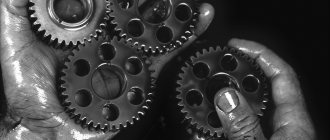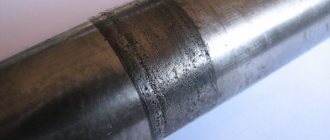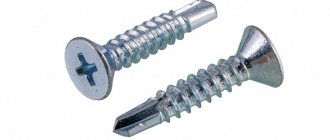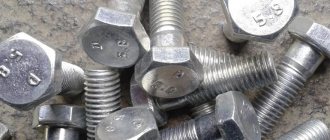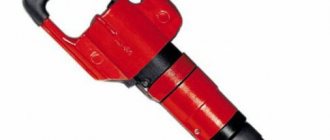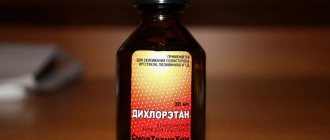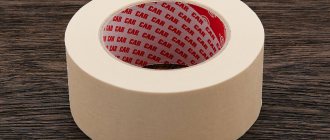Our company is a TENANT. The lease for office space is expiring; we are moving out after notifying everyone in advance. According to the contract, we must return the premises in the same condition in which it was leased, taking into account normal wear and tear. The landlord billed for ongoing repairs, believing that the scuff on the wall from an office chair was not normal wear and tear.
What is considered normal wear and tear in legal practice?
Return of leased property to the lessor
Upon termination of the lease agreement, the tenant is obliged to return the property to the lessor in the condition in which he received it, taking into account normal wear and tear or in the condition stipulated by the agreement.
If the tenant does not return the leased property or returns it untimely, the lessor has the right to demand payment of rent for the entire period of delay. In the event that the specified fee does not cover the losses caused to the lessor, he may demand compensation for them.
In the event that the contract provides for a penalty for untimely return of leased property, losses may be recovered in full in excess of the penalty, unless otherwise provided by the contract.
Comment on the article
1. The return of the leased property to the lessor, along with the payment of rent, is one of the main responsibilities of the tenant. The tenant is obliged to return the property in the condition in which he received it, taking into account normal wear and tear or in the condition stipulated by the contract.
The same individually defined item that was leased, together with all accessories and related documents, must be returned. The item must be returned by the tenant in the place where he received it and in the condition specified in the rental agreement. In particular, the contract may provide for the tenant's obligation to return the item after its current or major repairs or even reconstruction (renovation). If the requirements for the condition of the thing in which it must be returned are not provided for in the contract, then it must be returned in the condition in which it was transferred, taking into account normal wear and tear. In other words, the purpose of the returned item must correspond to the terms of the rental agreement or its usual purpose.
Normal wear and tear is understood as the wear and tear that the leased property would undergo during its normal use for the intended purpose specified in the contract during the term of its validity. Under any circumstances, wear and tear corresponding to depreciation standards established in accordance with current legislation should be considered normal (see Article 258 of the Tax Code). However, it must be taken into account that these standards are established mainly for fiscal purposes. And therefore the tenant is not deprived of the right to prove that normal wear and tear is actually higher.
Natural wear and tear is a completely normal and common physical process. What are its reasons? What can be said about the measurement methodology? What species diversity of this process is distinguished? These, as well as other questions, will be answered within the framework of this article.
general information
Let's start with a definition. Natural (physical) wear and tear is a natural process of deterioration of the characteristics of an object during its use. It occurs under the influence of a number of factors, such as: corrosion, vibration, friction, aging of materials, quality of service, deviation from the recommended operating values for humidity and temperature. The increase leads to an increase in the likelihood that an emergency failure of the equipment will occur, the quality characteristics of the products produced with its help will decrease, the residual service life of some parts and assemblies or even the entire product will decrease, and the object will be declared unsuitable for use.
Physical wear and tear of structures and buildings - what is it?
Physical deterioration of buildings is a value indicating the degree of deterioration of the technical and other operational characteristics of an object. Over time, any building structure deteriorates in strength, heat and sound insulation properties, water and air tightness, and other indicators that reduce the load-bearing capacity of buildings.
To prevent premature destruction of a structure and extend its service life, it is necessary to periodically inspect buildings and structures for their technical condition.
About types of wear
In practice we have to distinguish:
- Mechanical wear. Its result is a decrease in accuracy (deviation from cylindricity and parallelism).
- Abrasive wear. Indicates the appearance of scuffs and scratches on mating surfaces.
- Fatigue wear. It results in the appearance of cracks and broken parts.
- Collapse – causes deviation from flatness.
- Jamming – manifests itself in the sticking of mating surfaces.
- Corrosive wear. It manifests itself in the oxidation of the wear surface.
Separately, it is worth mentioning the reasons for wear. Depending on them, changes of the first and second kind are distinguished. What does this mean in practice? Natural wear in the first case is a process whose potential has accumulated as a result of normal operation. The second kind is used to characterize situations resulting from accidents, natural disasters, violation of rules of use, and so on.
About the time factor
Natural wear and tear can also be considered from the perspective of its course. In this case, it can be continuous or emergency. Let's look at them in more detail:
- Continuous wear and tear. This is the name for a gradual decrease in the technical and economic indicators of an object, provided that proper and long-term operation is carried out. An example is mechanical wear of parts and assemblies, which affects the moving parts of mechanisms and machines. It may also affect other elements of the system.
- Emergency wear. This is the name for rapid changes that reach such proportions that the operation of the facility in the future becomes impossible. An example is a cable breakdown. By the nature of its occurrence, it can be described as instantaneous.
It should be noted that emergency wear is almost always just a consequence of hidden processes. It may be externally associated with personnel errors, discrepancies between required and available consumables, and sudden surges in supply voltage. But the hidden wear released in this case does not directly affect the technical parameters. It simply increases the likelihood of an emergency occurring.
How is normal (natural) wear and tear of property determined for the purposes of applying the Civil Code?
0
Posted by: Egorov Konstantin Mikhailovich Other 08/20/2018
Question: How is normal (natural) wear and tear of property determined for the purposes of applying the Civil Code?
Answer: Normal wear and tear is a natural change in the properties of property, resulting in a decrease in its value.
The Civil Code of the Russian Federation repeatedly uses the term “normal wear and tear” (for example, in Articles 622, 689, 755). However, civil legislation does not contain a clear definition of this concept.
In the commentary to the Civil Code of the Russian Federation (part two of January 26, 1996 N 14-FZ (article-by-article) (Barinov N.A., Bevzyuk E.A., Belyaev M.A., Biryukova T.A., Baryshev S. A.A., Vakhrusheva Yu.N., Dolotina R.R., Elizarova N.V., Zakirov R.Yu., Zakharova N.A., Ivanishin P.Z., Morozov S.Yu., Mikhaleva T.N. .) it is stated that normal wear and tear is allowed in relation to the property, that is, a change in the technical, physical and other characteristics of the property towards deterioration, a decrease in the quality of such characteristics as a result of the use of the leased property.
In practice, normal wear is understood as wear that occurs during proper (in compliance with the manufacturer’s recommendations) operation or storage of an object (Resolution of the Federal Antimonopoly Service of the Far Eastern District dated February 21, 2011 N F03-8641/2010 in case N A73-3067/2010).
For example, in the Ruling of the Supreme Court of the Russian Federation dated July 11, 2016 N 301-ES16-7745 in case N A82-6309/2015, the court found that damage in the form of chips on sinks, broken windows, and lack of ceramic tiles are not a consequence of normal wear and tear of the premises.
The Resolution of the Arbitration Court of the East Siberian District dated May 24, 2017 N F02-1984/2017 in case N A10-2748/2016 concluded that normal wear and tear means the wear and tear that the leased property would undergo during its normal use for its intended purpose, determined by the contract during its validity period.
The court recognized that the roof defects were due to normal wear and tear of the material used during construction, provided by the plaintiff, and not the quality of the work performed by the defendant (Resolution of the Arbitration Court of the East Siberian District dated September 10, 2014 in case No. A33-14831/2013).
The court did not recognize damage to the laminate flooring, holes in the walls and dark spots on the wallpaper as normal wear and tear; damage to the laminate coating had the form of circles worn down to the underlying layers; abrasions formed in the locations of furniture, including office chairs on wheels (Resolution of the Arbitration Court of the Moscow District dated 02.08.2016 N F05-10510/2016 in case N A40-192472/2015 )
In the Resolution of the Arbitration Court of the Moscow District dated September 15, 2015 N F05-11582/2015 in case N A40-77482/14, the court came to the conclusion that the malfunction of the wheel pairs of cars (“cracks in the wheel rim, shell”) is not operational, not was caused by the natural wear and tear of parts and components of the car during its operation and is not associated with normal wear and tear, but was formed as a result of their improper operation by the carrier.
In the expert opinion, which was referred to by the court in the case considered in the Resolution of the Arbitration Court of the North Caucasus District dated August 17, 2016 N F08-5636/2016 in case N A32-7919/2015, it was concluded that the abrasion of laminate boards is its normal wear and tear, but swelling of the boards at the joints is the result of improper use - waterlogging.
In another case, the court proceeded from the fact that the consequence of the usual use of premises for their intended purpose (as an office) is wear and tear on the floors and soiling of the walls; the question of whether the degree of contamination and wear of floors and walls exceeds the level of normal wear and tear can be resolved if the condition of the floors and walls is reliably known before the start of the lease agreement (Resolution of the Arbitration Court of the North Caucasus District dated May 13, 2015 N F08-2739/ 2015 in case No. A53-23219/2014).
The courts considered the appearance of cracks on the walls to be normal wear and tear of the building with reference to SP 63.13330.2012 and the Manual on the design of stone and reinforced masonry structures (to SNiP 11-22-81) (Resolution of the Arbitration Court of the Ural District dated September 30, 2016 N F09-8348/16 on case No. A76-13488/2015).
In accordance with the service book (limitation of the scope of the warranty) of the vehicle, the manufacturer's warranty is limited to manufacturing defects and does not apply to cases caused, in particular, by normal wear and tear of any parts, natural aging of the coating of chassis parts and exhaust system elements, etc. ., the car’s service book contains a closed list of parts subject to wear and (or) destruction during normal operation; automatic transmission friction discs are not included among such parts (Resolution of the Federal Antimonopoly Service of the Central District dated July 21, 2011 in case No. A09-7945/2010).
The shortcomings of the fuel system are not associated with normal wear and tear of the units corresponding to the current mileage/life of the vehicle, and are not a consequence of intensive/heavy operation of the vehicle (Appeal ruling of the Supreme Court of the Republic of Bashkortostan dated July 19, 2017 in case No. 33-14934/2017).
The court rejected the arguments of the appeal that the damage indicated in the expert’s conclusion in the form of traces of contamination, abrasions, tears are the result of normal wear and tear, taking into account the depreciation rate for the interior decoration of the premises and the period of their operation, the decoration of the premises was depreciated by 100%, according to the expert’s conclusion defects and damage do not fall under the concept of normal wear and tear of property (Resolution of the Eighteenth Arbitration Court of Appeal dated December 30, 2015 N 18AP-15153/2015 in case N A47-11852/2014; Ruling of the Supreme Court of the Russian Federation dated August 3, 2016 N 309-ES16-8589 rejected in transferring the case for review in cassation proceedings of this Resolution).
Some more points of view on wear
Sometimes you need to look at this process from a different angle. Therefore, let's look at what other types of wear there may be. Based on the nature and extent of distribution, the following are distinguished:
- Global wear. This is the name for the situation when the process is extended to the entire object as a whole.
- Local wear. This is the name for the process when different parts and assemblies are affected to varying degrees.
Also, according to the technical capabilities and economic feasibility of restoring lost consumer properties, they are distinguished:
- Removable wear. This is a process that can be reversed physically and economically justified. That is, it allows for repairs and restoration of the object.
- Unrecoverable wear. In this case, it is impossible to reverse the process due to certain design features or difficult for economic reasons (for example, costs exceed the increase in value).
And more about the form of manifestation:
- Technical wear. This means a reduction in the actual values of the object’s parameters relative to the normative (passport) data.
- Structural wear. This means a deterioration in the protective properties of the outer coating.
Use of rental security deposit in case of damage
What happens if, during a routine inspection or when the tenant moves out, you find a door hanging off its hinges, broken walls, removed radiators, or a broken window? No investor wants to pay out of pocket for damage like the one clearly caused by the tenant.
The law and lease agreement determine how the tenant's security deposit can be used to pay for damages caused by the tenant. Before returning money from your rental deposit, consult with your property manager or real estate attorney to understand what your rights as a landlord are.
If you decide you can use the renter's security deposit to cover the damage, be sure to do a few things first:
1. Detail the damage by comparing entry and exit checklists to each other and using photographs and videos taken to document and prove the damage.
2. Estimate the cost of renovations by getting quotes from a reliable contractor or using a standard renovation price list provided by your property management company.
3. Return the security deposit to the tenant before the deadline, withholding the amount needed for repairs and add a detailed list of repairs.
Final thoughts on this topic
Normal wear and tear on rental property occurs when items wear out due to normal daily use. Landlords are responsible for repairing items that break due to normal wear and tear, but may use part of the security deposit to pay for damage beyond normal wear and tear caused by the tenant.
Landlords should treat their tenants fairly, understanding the difference between normal wear and tear on the rental property and damage caused by the tenant.
About signs of wear
An obligatory side of this process is an increase in costs that are needed for the manufacture of products (in terms of materials, energy, etc.), maintenance, and repairs. They are significantly higher than the average costs for similar new facilities. Sometimes, when physical wear and tear increases, costs do not increase. In this case, costs will be below average. It may well be that this situation indicates an increase in hidden wear and deferred repairs. It is difficult to say exactly, since this moment depends on a number of factors, among which should be mentioned:
- Quality of care.
- Operating conditions - how much dust is there, is there high humidity, are there abrasive contaminants, etc.
- Degree of loading of the object, intensity of use, duration of work.
- Features of the technological process and the degree of protection from the negative influence of the external environment.
- The quality of an object is the perfection of its design, the materials used, and so on.
- Qualifications of personnel entrusted with work and maintenance responsibilities.
Each of these factors affects the service life and the natural wear and tear of parts, assemblies, equipment, and structures.
Methods for determining physical wear
Calculation of the physical deterioration of buildings as a whole is the most important criterion for influencing the result of the actual assessment of the value of the object. To calculate the assessment of a real estate object, various methods are used, with the help of which the physical deterioration of structures is determined as a percentage.
Cost compensation methodology
According to this method, the percentage of physical wear and tear is equal to the costs that will be required to eliminate defects. The advantage of the method is the ability to substantiate the economic essence of the amount of total wear and tear.
Among the shortcomings are the difficulties that arise when determining the scope of repair work. It is extremely difficult to calculate the wear of the foundation and other technically complex elements.
Due to the fact that the technique is quite complicated to use, it is used, as a rule, for large objects that require determination of the physical deterioration of the building.
Chronological age method
The physical wear and tear of civil buildings or residential structures using this method is determined as the quotient obtained by dividing the chronological age of an object by its service life using the formula:
Bx – actual age of the object under study
Vss – standard operating period.
Simplicity of calculations and a minimum of calculated indicators are the main advantages of the method. But there are also disadvantages. This formula is unsuitable in cases where it is necessary to determine the wear and tear of a building with equal periods of chronological and operational age, as well as the impossibility of taking into account the replacement or repair of individual elements.
Effective age method
Assessing the physical deterioration of a building using the effective age method is in demand among specialists due to the fact that with just one arithmetic operation you can perform the necessary calculations using one of the formula options:
Ve – effective age, or in other words, what age the examined object looks like;
Vost – the period that remains until the end of the operational period;
Vss – standard operating life.
A significant disadvantage is that it is almost impossible for an appraiser to justify the value of Vost (based on the lifespan until the end of operation), since no one can say exactly how long the building will be in operation. An exception is considered the case when at a specific time the object is subject to demolition. Therefore, in practice this lifetime method is almost never used.
Expert method
This method for determining the physical deterioration of buildings is based on a scale of expert assessments, which is set out in full in VSN 53-86r. The value is determined by external damage that can be seen during visual inspection.
The formula for physical wear and tear is as follows:
Иi is the amount of wear of a specific i-element (the indicator is stable and is taken from the corresponding tables);
УВi – specific gravity of the studied i-th element of the object;
i – element number.
The advantages of the method include:
- ease of calculations;
- evidence of calculation data established by current regulatory documents.
There are also disadvantages:
- calculation results are obtained with deviations in the range of ±5%;
- The accuracy of the result directly depends on the experience of the appraiser. It also often happens that significant signs of wear are simply hidden under cosmetic repairs and, as a result, the amount of wear is greatly underestimated;
- influence of the subjective factor. For example, the description in regulations of the amount of wear for a “central heating system” corresponds to the value “drip leaks in heating devices, corrosion of pipelines, poor operation of air heaters” and the percentage of wear in this case ranges from 41 to 60. It is not at all determined how much is 5 or more heating devices should have these “drip leaks” and how to correctly assess the technical condition of the heating system.
In general, if we compare all the positive and negative aspects of the method, the first ones significantly outweigh, which is why it is used very often by appraisers.
Breakdown method
Provides for the calculation of wear and tear of an object while simultaneously taking into account the possibility of its elimination, in particular:
- deferred repairs or correctable wear and tear;
- irreparable wear and tear, when worn-out elements cannot be replaced or repaired due to their short service life;
- irreparable wear and tear, in which only when reconstructing or overhauling an object can worn-out elements with a long service life be restored.
The advantage of this method is the ability to take into account not only visible, but also hidden factors affecting wear. If there is no reliable information about the volume of repairs, then the method cannot be applied in such cases.
Consequences
Due to wear and tear, the productivity of equipment and machines decreases. This is due to downtime, repairs, and additional maintenance. In addition, there is a certain impact on technical parameters. And only for the worse. For example, the processing accuracy of metal-cutting equipment deteriorates. Because of this, it is necessary to check and adjust devices more often. And we shouldn’t forget about the simply increased yield of defective products. For example, it is believed that the efficiency of machines can decrease by up to 25% over 10 years of operation.
How to influence the indicator?
Wear and tear of structures, equipment, components and parts is inevitable. But it is quite possible to extend this process. The actual value depends on the resource and service life. The first parameter is determined by the operating time, while the second is the calendar duration of operation. Usually, when creating an object, it is indicated/calculated how long it can work. For example, a car is guaranteed for 100 thousand kilometers or 5 years. But additional influence is exerted by the state of the environment, the presence of peak loads, the frequency and quality of maintenance/repair, the mode and intensity of operation. By keeping all these indicators within reasonable limits, you can achieve significant results.
Normal wear and tear - Great Encyclopedia of Oil and Gas, article, page 3
Normal Wear
Page 3
During normal wear, tool wear occurs much more slowly; this period takes 90 - 95% of the total operating time of the tool before the next sharpening. [31]
An analysis of the normal wear mechanism shows that in this case, an increase in wear resistance can be achieved by changing two indicators: the thickness of the secondary structures and the strength of the secondary structures, depending on their chemical nature. The first indicator is mainly related to the plasticity of surface layers, which largely depends on the base material, the initial state of the surface and the presence of surfactants in the lubricant. The second factor is mainly determined by chemical modification processes. [32]
The main signs of normal wear, in contrast to various types of damage, are the absence of any types of destruction of the base material, the localization of destruction in the thinnest surface layers of secondary structures formed during friction, as well as the dynamic equilibrium of the mechano-chemical processes of formation and destruction of secondary structures, ensuring steady progress of the process. [33]
The main feature of normal wear is the absence of any types of destruction of the base metal. The dispersion process occurs by separating films of secondary structures formed during friction. Their presence on friction surfaces is an obvious and absolutely necessary condition for normal friction. [34]
For the normal wear period, as shown by the curve in FIG. [35]
In the area of normal wear, the intensity of wear is characterized by the angle of inclination of the wear line to the abscissa axis. In this period, dimensional wear depends both on the material of the tool and the material being processed, as well as on the cutting mode, geometry of the cutting tool and coolant. [36]
Reducing the amount of normal wear and the likelihood of catastrophic wear increases operational reliability, increases the overall service life of the machine, and also reduces the cost and duration of its repairs. [37]
Reducing the amount of normal wear and the likelihood of catastrophic wear increases the overall service life of the machine, and also reduces the cost and duration of its repairs. [38]
The specified criterion for determining normal wear (destruction) of tires is conditional. [39]
Gear teeth are subject to normal wear from friction, and accelerated wear - as a result of incorrect shock gear shifting, incomplete meshing of teeth, jerking when starting off and poor quality lubrication. In this case, the teeth chip, chip, and sometimes break. The condition of the teeth is monitored by external inspection, a template, or by measuring the thickness of the teeth with a caliper along the initial circumference of the gear. [41]
The second period is characterized by normal tool wear. The third period is associated with rapid tool wear. After a short period of time, its cutting edge is destroyed. [42]
Fulfillment of this requirement ensures normal wear and sufficient durability of the wheel before dressing under grinding conditions that satisfy the conditions for rational operation of the work process. [44]
Pages: 1 2 3 4
www.ngpedia.ru
